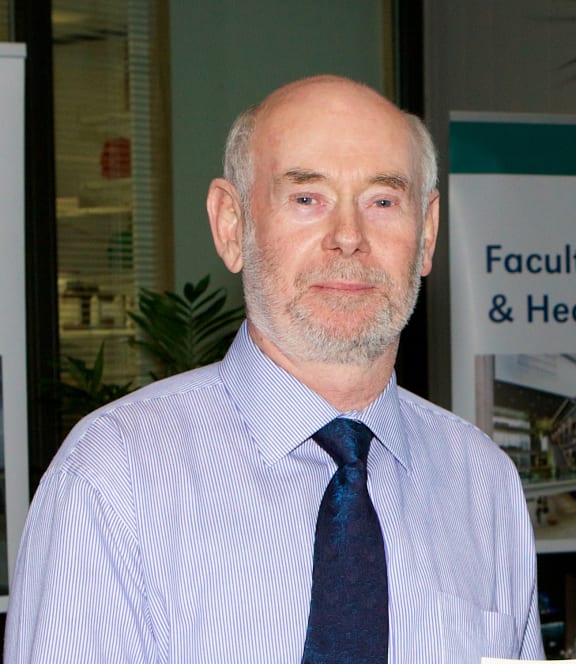‘I cannot describe the feeling that you get from taking something that you’ve developed from nothing … put it into a patient and seen a result … that night I just lay in bed and gazed at the ceiling with a smile on my face.’

Colin Green, at the University of Auckland, was one of the first recipients of a Marsden grant. Photo: University of Auckland
When Colin Green, a professor of ophthalmology at the University of Auckland, had a student come to him and say her experiment hadn’t worked, he had no idea it would kick-start nearly two decades of ground-breaking research into wound healing.
Direct cell-to-cell communication through structures called gap junctions has been shown to lead to wound lesion spread, inflammation and scarring. Having set up a procedure to block cell-to-cell communication on a brain lesion, Colin Green says the expected outcome was that the tissue damage would grow larger. Instead it grew smaller, thanks to the use of an experimental gel containing short single-stranded antisense DNA designed to stop the “chatter” amongst cells.
“When we wound a tissue, wound a cell, death signals get sent to neighbouring cells and that’s what we were preventing from happening … from that initial observation we then went down the road of wound healing that we’ve been going down for nearly 20 years now,” he says.
This research led to one of the first Marsden-funded research programmes. Collaborating with David Becker, a London-based cell biologist, the pair continued their research into the biology of connexin and gap junctions.
And as a result, they developed Nexagon™, a gel which works by interrupting cell communication and prevents the production of a protein that blocks healing. The first human application of the gel was in Auckland in 2005, with stunning results.
Used under compassionate consideration, the gel was applied to the eye of a patient with a severe chemical burn that was refusing to heal. Today, the man has full 20/20 vision.
This research led to the establishment of CoDa Therapeutics New Zealand and later CoDa Therapeutics Incorporated in the United States. Investment in the company and its research has come from around the world and Colin Green says they’ve raised the equivalent of NZ$90 million in investment over the last eight years.
This has enabled CoDa Therapeutics to run clinical trials on the skin and eyes. Two phase-two trials have been completed and the team hopes the next trial will lead to Phase III trial and the eventual licensing of Nexagon. Possible applications are continuing to open up, with the realisation that people with chronic wounds such as venous or diabetic leg ulcers are responding best to the drug.
'The drug triggers the epithelium to heal over. It dampens down the inflammatory response but it also, I believe, brings back the blood vessel bed and it’s those small blood vessels that seem to be the common denominator in so many wounds that we have.'
He is now taking his research a step further to challenge a 40-year-old concept that neovascularisation feeds cancers. “We are suggesting instead, and counter intuitively to current thinking, that we need to restore or protect blood vessels in cancers - at the very least enabling better chemotherapy delivery or radiation treatment.”
But Professor Green admits he wouldn’t be where he is today without the initial help he and his team received from the Marsden Fund. “Absolutely not. By being able to explore the basic original research ideas from which, by chance almost, this commercial development came from … the whole thing skyrockets.”
Colin Green is one of the speakers in the Royal Society of New Zealand 10 by 10 lecture series which celebrates the 20th anniversary of the Marsden Fund. He will present his lecture in Wanaka on Thursday 25 September and in Rotorua on Tuesday 14 October.

